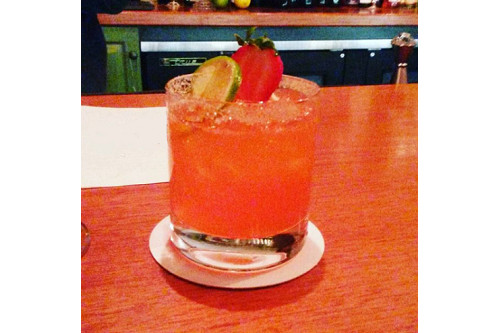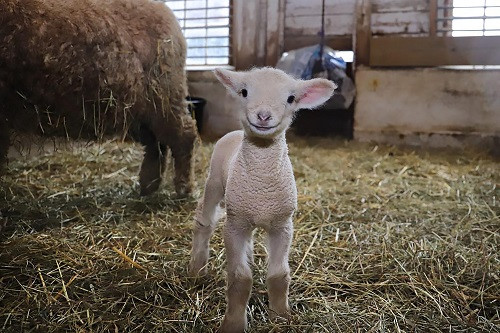Tourism is a highly visual industry. Photos are a key tool used to tell tourism stories, but there’s a secret behind the great ones that make the biggest impact. Someone took the time (and often, money) to get it right.
More dramatically put: someone resisted the temptation to use photos that were easy to get but kind of “meh” in terms of quality. “Meh” photos serve the functional purpose of photography, but they are completely uninspiring and make no impactful impression on the viewer. So, yeah…you have photos to put on your website. Check that box. But are they seducing site visitors into considering a trip? That box stays unchecked.
Fear not, there are a whole bunch of “great” and “meh” photo examples down below. But first…
Sucky (and Silent) Consequences of Using “Meh” Photography
When tourism businesses choose to settle for “meh” photography, it causes much heartbreak. Throughout my career as a tourism publicist and marketer, I’ve seen:
- A hotel client who lost a highly-desired Architectural Digest story about their opening launch because their photography wasn’t good enough. (AD wasn’t being snooty…their photography was NOT good enough.)
- Another hotel client whose online booking conversion rate absolutely sucked…and a website audit revealed that people were leaving the site after looking at the photo gallery. (Tragic, as a photo gallery should inspire people to hit the “book now” button.)
- A destination client who was included in a syndicated news editorial round-up…and the only one of the eight destinations included without a photo accompanying their blurb because their photo wasn’t “quite right.” (Seven destinations with glorious vibrant photos and only one with just text… which one do you think got overlooked by readers?)
But those are examples where the consequences were traceable and known. Far more dangerous are the silent consequences of “meh” photography. No one ever leaves your website unimpressed and without booking…and then calls you up to say, “hey, I was considering a stay at your hotel, but just wanted to let you know that the photos didn’t really sell me on the place so I just left the website without booking.”
So, the bottom line is…you don’t even know how many sales you’re NOT making because your photos are just “meh.”
But trust me. If they’re “meh,” it’s happening.
Why Is This So Hard?
Why do so many tourism businesses settle for less-than-great photos to use in marketing? Three common reasons.
- They feel it takes too much time and they don’t have the bandwidth to organize/oversee it.
- They don’t want to spend the money for a photographer and/or stylist.
- They don’t understand the difference in impact between a “good enough” photo and a “great” photo.
It’s a real head-scratcher to me, but I’ve seen clients spend $20-$30 million building a gorgeous hotel, and then fight with me about spending $20,000 on photography for the website, brochures, and socials.
In other scenarios, I get the… “My sister-in-law takes great photos as a hobby – you should see her Instagram. So I’m just going to have her do all our photography.”
Or the… “I don’t have photos of THAT specific program even though that’s what we’re promoting, so can we just use a general photo instead?”
Or the… “These brochures are really old and our hotel rooms don’t look like that anymore, but that’s all we have so just use those at the trade show.”
To spend all that money building your business and brand, and then NOT spend the money on a professional photographer to produce photos that help you sell it? That’s fumbling at the goal line. And it’s sabotaging the ROI of all the money you spent on building the business itself.
What Should a Great Photo Do?
A great photo is like an assist in sports: it should assist you to close a sale. That assist might come in the form of (for example)…
- An Instagram photo that stops thumbs while someone is scrolling and makes them want to explore your entire Instagram profile…and ultimately your website.
- Photos on your website that evoke emotion, inspire a desire to visit, make them want to check pricing and logistics for a trip.
- Photos in a magazine that arrest people’s attention as they’re flipping through the pages and make them want to read the accompanying editorial story…which hopefully makes them want to visit your website.
Here’s a great case-in-point. Years ago, I was in Armenia with a photographer getting shots of a collection of new boutique hotels launching that year. We had no staff with us (literally no staff – the hotels weren’t even open yet) and no stylist. It was just her and me trudging around the countryside with tons of photography equipment. And FYI – while I’m eager and helpful, I know zip all about being a photographer’s assistant.
Here’s what one of the hotels looked like, with a simple “point and shoot” approach.

It DOES look like a historic castle, and you DO see it’s right next to a rushing river and nestled in the mountains. So, it definitely gives a sense of place and is “ok.”
Here’s what it looked like when the photographer got done with it.

Listen, folks. This was NOT a simple point and shoot. We had no cell service and no radios to communicate with each from opposite sides of the river, and crossing that river was no picnic either. Her trying to signal to me which lights to turn on or off, which umbrellas to move slightly left or right, and could I tilt that ONE light on the side to angle more toward the patio? No, not THAT one. THAT one.
Getting this shot took HOURS. Actually days, because we had weather issues intervene.
But look at those two photos. Which one stops your thumbs while scrolling and which one makes you say “OMG that place looks breathtaking and I want to go there?”
Great photographers do more than just click a button on a camera. They harness the power of lighting, tone, context, perspective, props, spatial relations, and emotion. In this case, the photographer studied the situation and said, “what photo…what angle…what perspective…what styling is going to show this building in the best, most seductive, most appealing way?” And after taking a lot of test shots from various positions at various times of day, this nighttime photo won the honor. (Should I mention how many design and travel magazines made this photo their centerfold?)
I mean…if your sister-in-law can do all that, then by all means lets hire her.
What’s My Point?
Getting great photography isn’t easy. It takes time, planning, and commitment. You may need to invest in props and other items to achieve the objective… flowers, food, drinks, people, and more. You may need to reschedule (and spend money on a wasted day) because of weather. If you’re already open, you may need to clear entire public spaces for several hours or a day – losing revenue from paying guests who don’t have access during that time. You may need to take a shot over and over and over and over again to get it just right. And damn it, you definitely need a professional photographer and/or stylist to do it justice.
Yes, all that costs time and money. But the difference between “meh” photos and “great” photos is entirely about MAKING MONEY. Skimp elsewhere if you must. But do not skimp on great photography.
To further illustrate the difference, here are a few examples of photos I’ve come across in my tourism work. Some of these businesses know the secret to a great tourism photo, and some clearly don’t understand what makes an impact.
By the way, there are deliberately no business names here. This isn’t a commentary on who’s doing it right and who’s doing it wrong. It’s an objective look at how photos do or don’t make a worthy impact.
Everything about this charcuterie board screams “dig in.” Lighting, color, texture, positioning. This delicious photo was no happy accident.

This cocktail gets completely lost in this photo. It’s a gorgeous color, but sitting on that similar colored surface, the vibrancy doesn’t pop as it should. Plus the background is super distracting. If you’re a DIY Instagrammer for your business, and just taking quick snaps like this “on the fly” for posting, at least do this: take that glass and snap pics of it in in a few different settings, and from several angles – high, low, above, side, etc. If you take a dozen photos of this cocktail – which can be done in just a few moments – you’ll immediately be able to spot the one that shows the cocktail off to its best advantage.

Let’s talk about dramatic architectural features, such as floating pools. We once had a client that was debuting a floating pool and they fought us like the very devil about getting overhead drone shots of it. They didn’t have easy access to a drone and didn’t want to pay for it. But honestly, a straight-ahead shot of a floating pool just sucks all the drama out of that super-cool architectural feature.
To illustrate, here’s a picture at another hotel of their floating pool taken from different angles. You can see how one showcases the floating pool and in the other, it gets lost.

And these folks REALLY did their floating pool villas justice, ensuring their website gallery shows them from multiple angles and various times of day:




Food shots need special attention because visuals aren’t necessarily the main sensory trigger for humans when it comes to food. Taste, sound (sizzling, pouring, sauteing, etc.), scent, and texture all play a role in our emotional connection to food. And that’s hard to communicate in a flat photo.
Here, capturing sugar in mid-shake on this cannoli gives more energy, life, and interest to the photo than just a static pic of a cannoli.

But these pancakes are nearly unidentifiable in this photo. In the quest for a close-up to show the dripping, oozing goodness, perspective gets lost here. If you’re scrolling quickly, you can’t even tell what it is, and that super-crisp piece of bacon on the side doesn’t help… it almost looks like the pancakes are sitting on a wood shelf. Perhaps backing up the camera to show the whole plate, and catching the moment when the chocolate syrup is being poured onto the pancakes might achieve the objective better. But – you know what I’m going to say – try it a dozen different ways before deciding which one makes the right impact.

Oh, you’re taking pictures of animals? NEVER just snap one-and-done. You take tons of photos from multiple angles in order to get one that will stop people in their tracks. Like this:

And finally, these folks are rebuilding a really important and historic wall. But this photo will stop no thumbs. I’m sure the dude on the right won’t be pleased that his behind is on Instagram, and everyone milling around looking down at rocks doesn’t do the story justice. A close-up of a volunteer holding up a piece of rock with a huge smile on his/her face… or better yet, faux-kissing it?… could better tell the story of the passionate volunteers involved. Or have him/her sitting on the wall and get enough context in the shot to see “kissing the rock” and the wall itself. Or… hey, I’ve got an idea… take a dozen different shots and see what works best. 😊

So, in conclusion, please do what it takes to get great tourism photos. There’s really no secret to capturing ones that make an impact… just spend the time and/or money to do it right.
And let me just clarify: by “great,” I mean photos that achieve your objective of inspiring people to emotion and action. “Great” is one of those vague words that always need clarification and shame on me for using it so liberally in this post. See why you should be careful using that word here.
 get travel marketing tips
get travel marketing tips 




